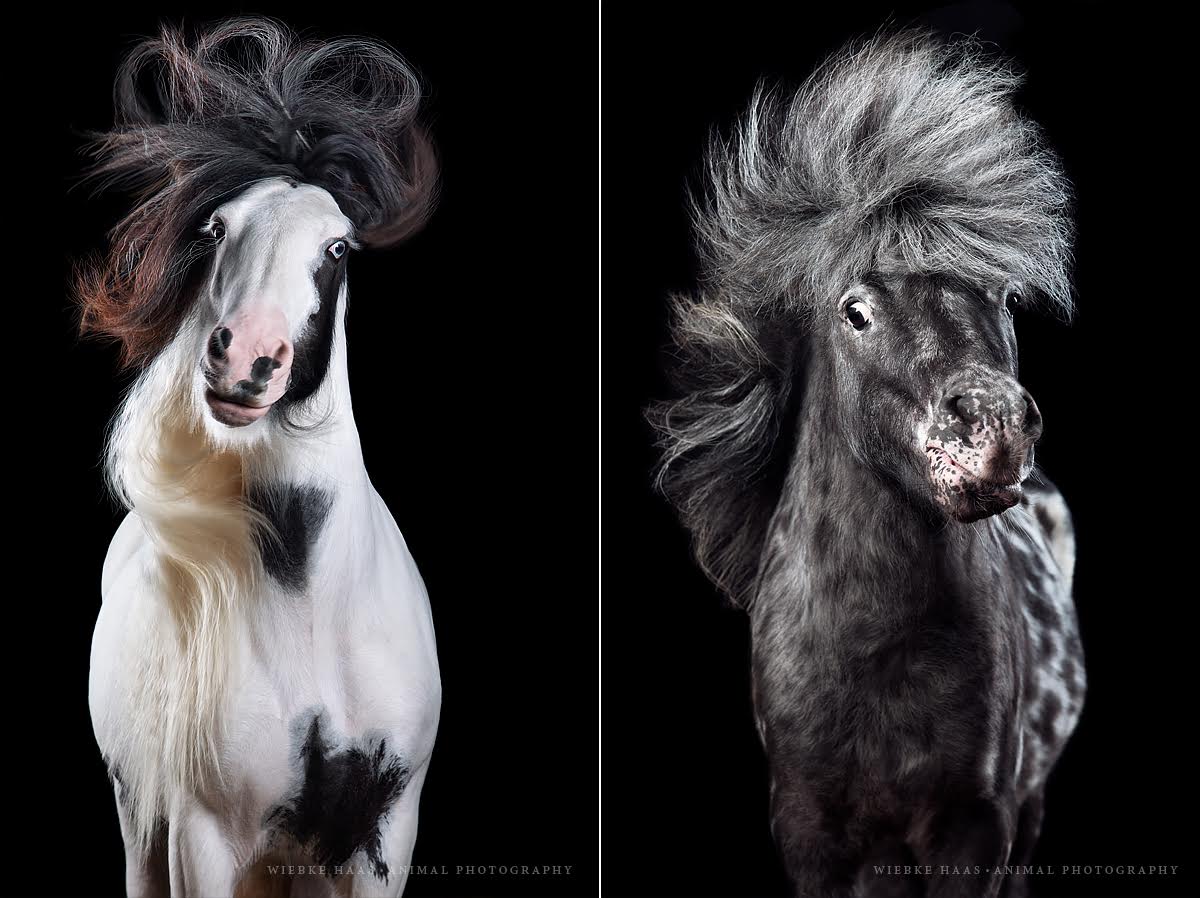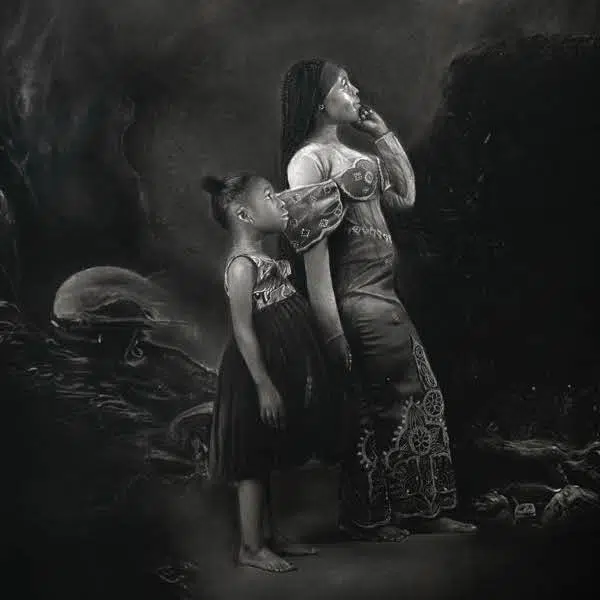
Mozart and Allaus
Horses are known for their intense beauty and lively—if not unpredictable—spirit. It’s no easy feat to train a horse, let alone photograph them. Wiebke Haas is one photographer who has mastered this impressive art. Since 2011, she’s captured their strength, grace, and most notably, their senses of humor. Her unforgettable horse photos feature a variety of stunning equines who let their long hair fly in a way that’s both glamorous and so silly they're sure to make you smile.
Haas’ foray into this unique style of photography was serendipitous. During a photoshoot with a Haflinger stallion named Mozart, she “recognized his whirling mane” and wanted to draw attention to it. “By tickling his ears,” she tells us in an email, “he shook his head in this brilliant way.” After that, her passion for these expressive and intense images was born. In an ongoing series called Horsestyle, Haas combines her equine training skills with technical photographic precision. The results pay homage to how incredible these creatures look and the nuances in their individual personalities.
We were honored to speak with Haas about Horsestyle. Scroll down to read the entire interview.
Wiebke Haas captures the beauty and charm of horses in her amusing animal portraits. We asked Haas about her images of horses in an exclusive interview. Scroll down to see what she has to say.

Polly and Flecki
What is the process to photographing these horses? What is your studio setup like?
First, I’m testing the shaking skills of the horse. For this project, we need models which have a long and fluffy mane but can also move their head with an intense expression. If the horse is suitable for this project, I set up my mobile studio at the horses barn. Every one of my fluffy models first gets to know the black background blanket, the lamps, the soft boxes, and the sounds of the flashes when releasing. They relax really fast when you comfort them by soft voice, gentle touches, and goodies. Then we set up the horse straight forward to my camera. Normally I work with one key light and one or two side and back lights. It depends on the coat color. The darker the horse, the more light I need.
What was your experience with horses prior to starting Horsestyle?
When people ask me why I’m photographing horses I usually respond with, “Because I adore their beauty and magnificent grace!” I’m fascinated by their power and expression. For me, horses are one of the most aesthetic animals in the world. That’s what I’m normally focused at during a photo session.
The horses' hair is one of the most striking parts of your photographs. How do you get it to look so fabulous? They look like super models!
It’s all about the shaking movement of the horse. Some of the horses already were trained by their owners to shake their heads. Other horses just needed a little tickle in the ears. The most difficult part was to keep the horses straight to the camera. Most times, they wanted to move their head to the side or downward. A good handling and horse goodies were highest priority. I focused on a great face and a harmonic choreography of the mane. In some cases, I used Photoshop to combine more hair areas into one picture.

Hafid and Pauli
Working with animals can be unpredictable. Is there a time when a “happy accident” resulted in a photo you absolutely loved?
Normally my images are very well planned. In the studio, we are not very flexible because everything has to happen in the perfect light spot. But sometimes I recognize a great expression or movement of the horse, so I focus more on what the horse really can do by itself instead of trying to push it into another pose. I’ve got one picture where one of my lamps didn’t released but the horse was in a great position so I got a fantastic and not planned low key shot of it.
When did you realize that horses can be so funny? What was the inspiration for you to “humanize” them in this way?
It’s my greatest passion to tease out nearly human expressions of my horse models. In 2011, I took the first image of the photo series Horsestyle. It shows the beautiful Haflinger stallion, Mozart. During the photo session, I recognized his whirling mane and wanted to draw attention to it. By tickling his ears, he shook his head in this brilliant way. I then realized that horses can look darn funny too! Fortunately, they are absolutely not vain and always up for funny things. Because of their cleverness, they learn really fast that shaking the head results into compliments and goodies.

Pirate and Anton
What is the most memorable horse you've worked with so far?
Mozart is definitely one of them. Nowadays, he's like a mascot for my photography because of his popularity. But I can remember every of my photo models. I put a lot of of trust into horses and it’s always a heartwarming moment when they bring out their best expressions in the studio—like they would know what we are doing there.
What camera and equipment do you use to capture such striking, sharp portraits?
I’m using a Canon 1Dx and Hensel studio lights. Hensel is a German company which has been supporting my work for the last years. You can see a technical development through the series. I first started with slow speed but powerful flash lights. This year, I had the chance to work with the fastest compact flash lights in the world by Hensel. Getting every single hair really sharp was no problem anymore.
What are some other animals you would like to work with, but haven't had the chance yet?
Wild animals, definitely. I’d love to have elephants, tigers or pandas in my studio.

Suertudo and Linus
Wiebke Haas: Website | Instagram | Facebook
My Modern Met granted permission to use photos by Wiebke Haas.
This post may contain affiliate links. Please read our disclosure for more info.
Related Articles:
Photographer Captures the Wild Beauty and Elegance of Horses
Interview: Artist Who Runs Naked with Horses Shares Why These Animals Are His Muse
Intimate Animal Portraits Capture Unique Quirks and Personalities of Cats, Dogs, and Horses






















































































